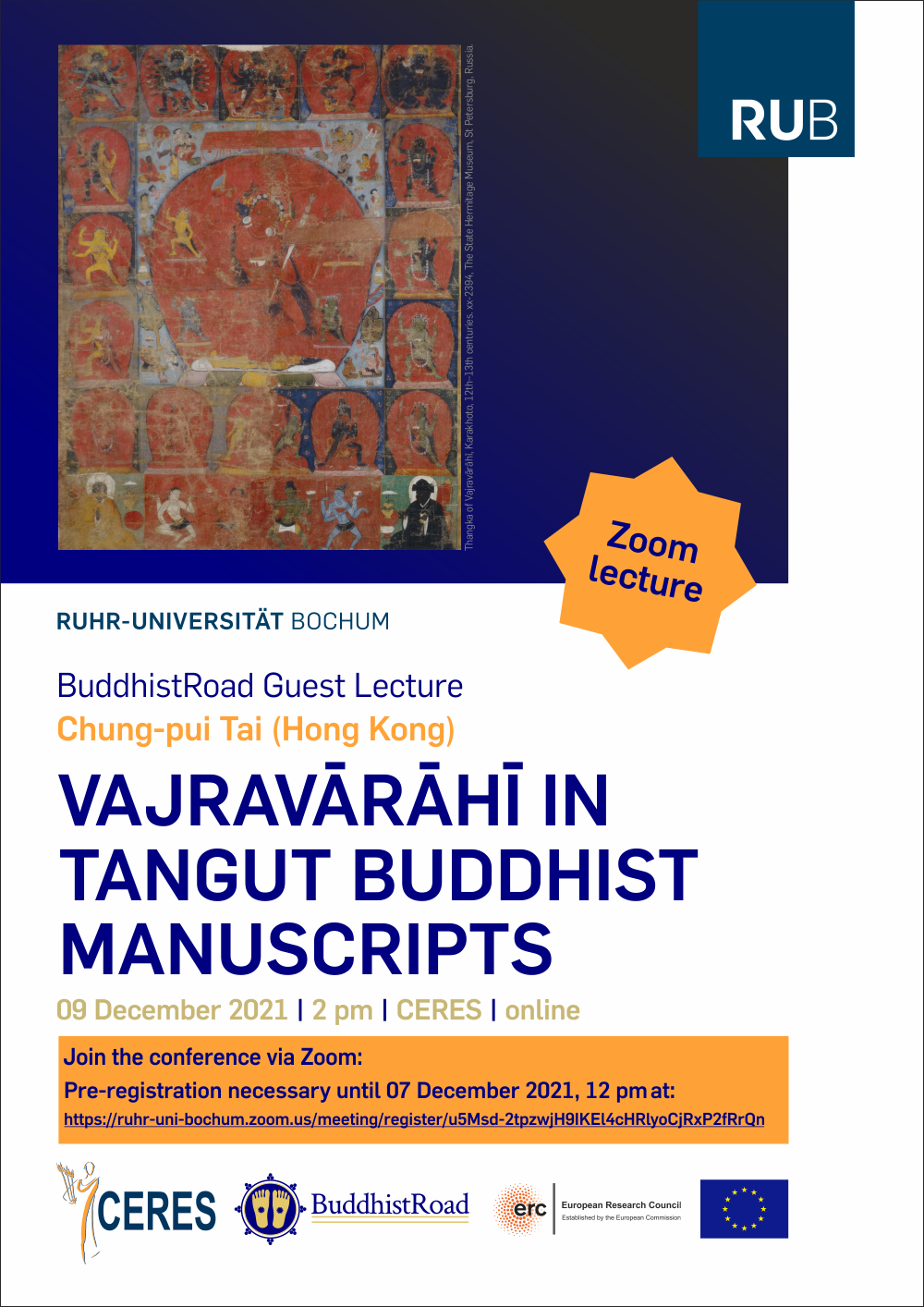Vajravarahi in Tangut Buddhist Manuscripts

09 December 2021 - Chung-pui Tai (Hong Kong)
Vajravārāhī in Tangut Buddhist Manuscripts
online guest lecture at the BuddhistRoad project, CERES, Ruhr-Universität Bochum
Vajravārāhī is often the object of visualisation in the Six Yogas of Naropa (Tib. nA ro’i chos drug) and the Mahāmudrā, the pillars in the Kagyu (Tib. bka’ brgyud) teaching of Tibetan Buddhism. The cult of Vajravārāhī became popular among the Tanguts with the introduction of Tibetan Buddhism between the 11th and 13th centuries. A Vajravārāhī Cave was built at Liangzhou (涼州), on the outskirt of the present-day city of Wuwei (武威), in 1130 CE during the reign of Emperor Chongzhong (r. 1087–1139, 崇宗). This cave is a good illustration of the cult of Vajravārāhī in the Tangut territory. The thangkas discovered among the Tangut antiques from Khara-Khoto also contain images of Vajravārāhī alone or paired with Cakrasaṃvara. However, the most critical evidence of the cult of Vajravārāhī is the Tangut translation of Buddhist texts on Vajravārāhī. This talk aims to provide an overview of Tangut Buddhist manuscripts related to Vajravārāhī. The talk will explore the content of these manuscripts. It will also discuss the role of Tangut Buddhism in the transmission of the cult of Vajravārāhī in the region.
Report of the guest lecture soon here


